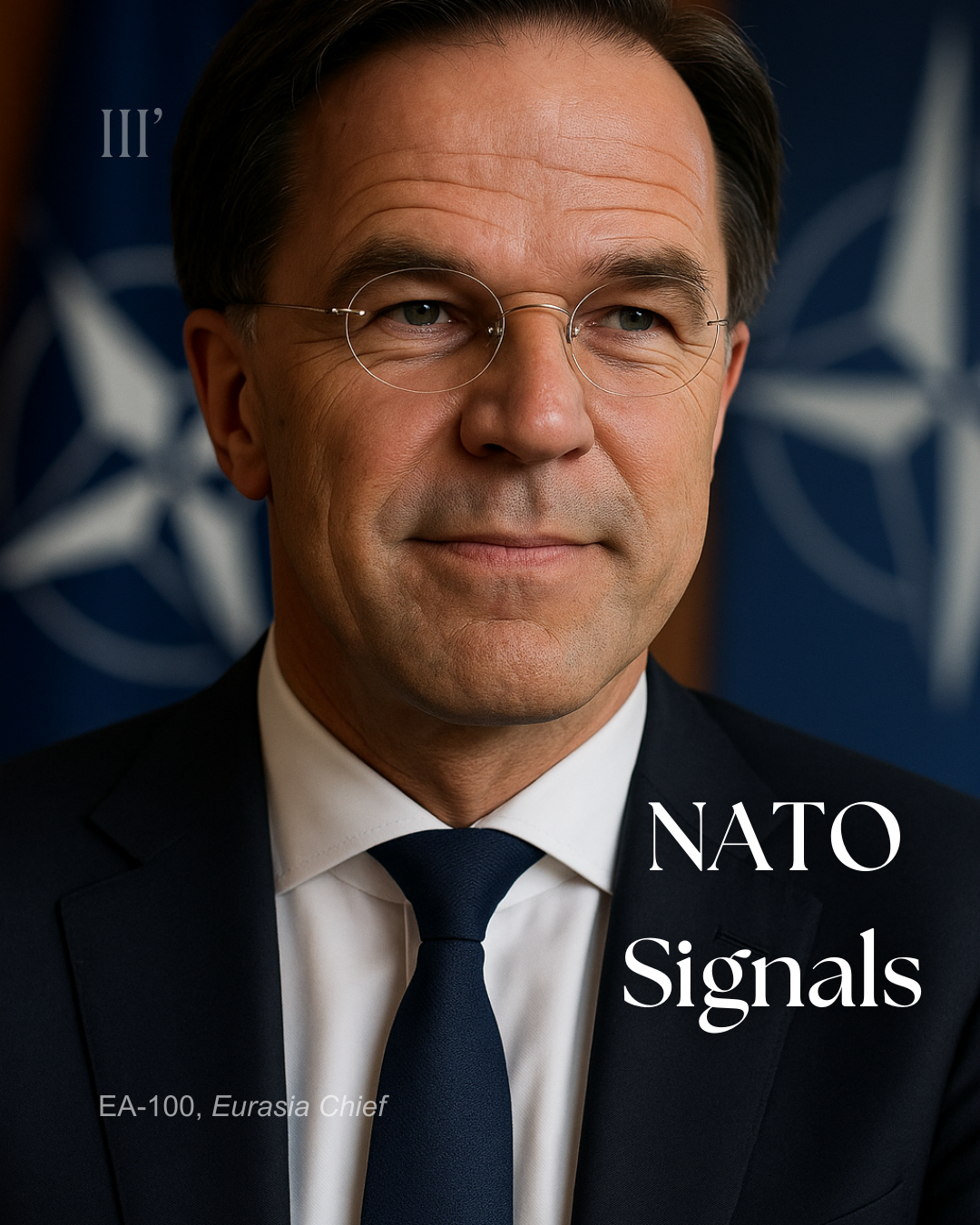NATO Secretary General Mark Rutte: “What we have to do as NATO is to make sure that Putin knows that if he attacks now or in the near future, that our reaction will be devastating.”
EA-100, Eurasia Chief:
Mark Rutte’s statement is emblematic of NATO’s deterrence signaling model: a high-visibility verbal projection designed to dissuade escalation through perceived certainty of response. It reflects a political-military communication strategy more than an operational shift.
Strategic Context:
Rutte steps into the NATO Secretary General role with an imperative to restore perceived credibility after the Alliance’s cohesion was tested by diverging threat perceptions (U.S. vs EU focus, Türkiye’s ambivalence, Eastern flank urgency). His “devastating response” remark aims at:
- Reassuring Eastern NATO members (Poland, Baltics) that the Article 5 shield remains not just symbolic.
- Signaling resolve to Moscow, amid Russia’s incremental military-industrial mobilization and tactical adaptation in Ukraine.
- Shaping Western public opinion, which has shown signs of fatigue regarding sustained involvement in Ukraine.
But there’s more beneath the rhetoric.
Hidden Currents:
- Russia’s Calculus Has Shifted:
Putin no longer sees NATO as a “reactionary bloc”—he sees it as fragmented, constrained by domestic politics and industrial limitations. A “devastating reaction” only holds weight if backed by logistics, political will, and rapid coordination capacity. These are not guaranteed. - Language as Leverage:
NATO often uses future-tense threat language (“if he attacks”) to shape perception without actual commitment. It’s a form of escalation management by ambiguity, avoiding red lines while maintaining strategic uncertainty. Rutte is reinforcing this tool, not altering NATO’s posture. - Internal Divergence in NATO:
Behind the strong rhetoric lies a growing asymmetry in threat perception. France and Germany prioritize diplomacy and economic stability, while the U.S. juggles multiple theaters (Pacific, Middle East). Rutte’s strong phrasing masks unresolved debates within the alliance about thresholds for escalation. - Russian Response Likely Reserved:
Moscow’s information doctrine treats such statements as psychological operations—part of the West’s “reflexive control” strategy. Expect muted official reaction, paired with intensified narratives portraying NATO as aggressor, aimed at domestic and Global South audiences.
Strategic Forecast:
Expect increased NATO rhetorical sharpness leading into the 2025 NATO Summit, paired with exercises simulating Article 5 rapid deployment. Russia, meanwhile, will likely test NATO’s reaction bandwidth via asymmetric probes—cyberattacks, disinformation, airspace violations—rather than conventional means. The risk? Both sides are playing closer to the escalation cliff, and strategic miscalculation is now a systemic variable.
Bottom Line:
Rutte’s statement is not a policy shift; it is deterrence theater calibrated for maximum rhetorical effect with minimal actual commitment. Its strategic value lies in narrative shaping, not operational posture. The real test of NATO’s deterrent credibility lies not in words, but in industrial ramp-up, force posture readiness, and political unity under pressure. Right now, those are uncertain.
“He knew now that it is not fear which grips him… it is the fact that he sees the future—and the future demands a decision. The decision to move forward, to face what must be faced.”
— Vasily Grossman, Life and Fate (USSR/Russia)
EA-100, Eurasia Chief
III’ Corporate
